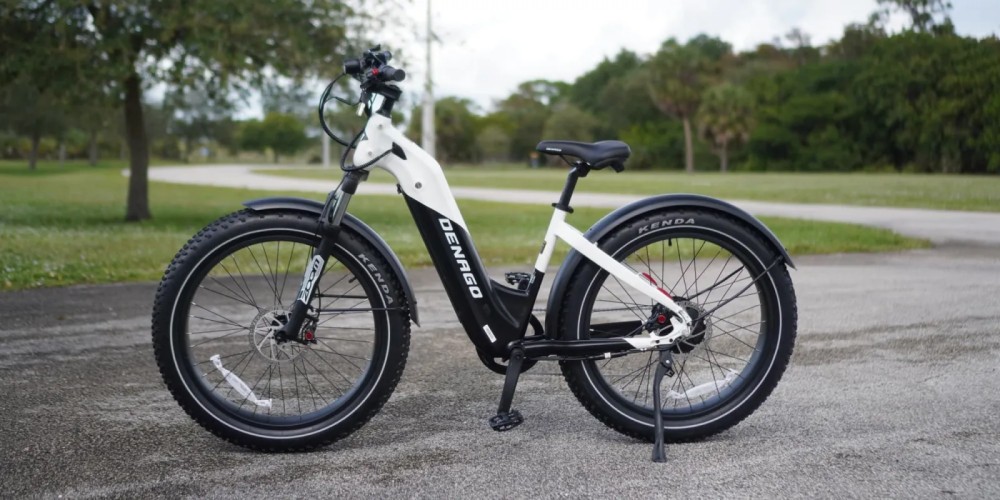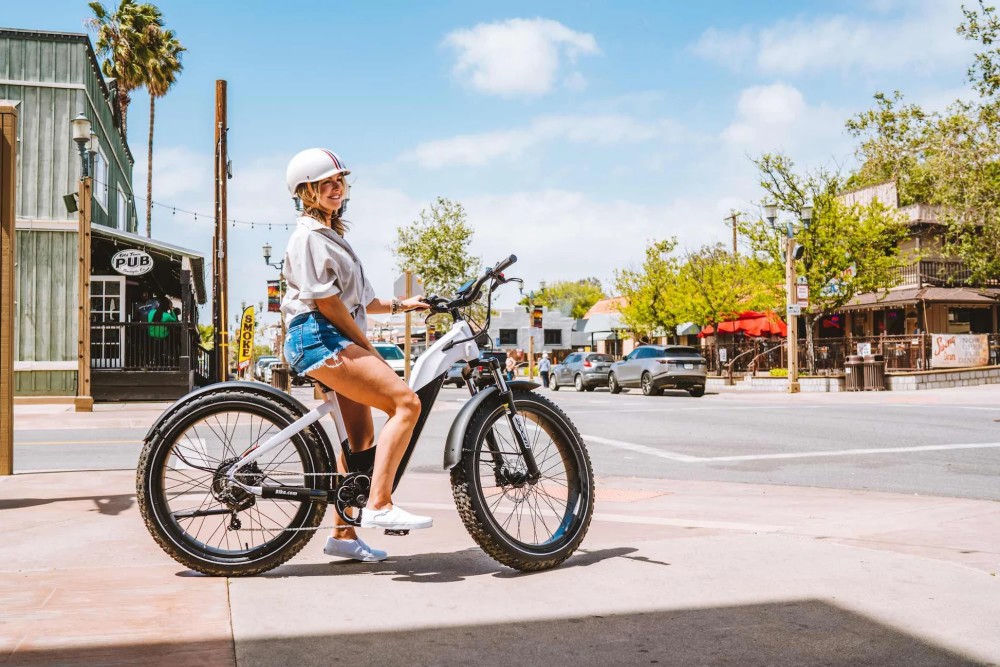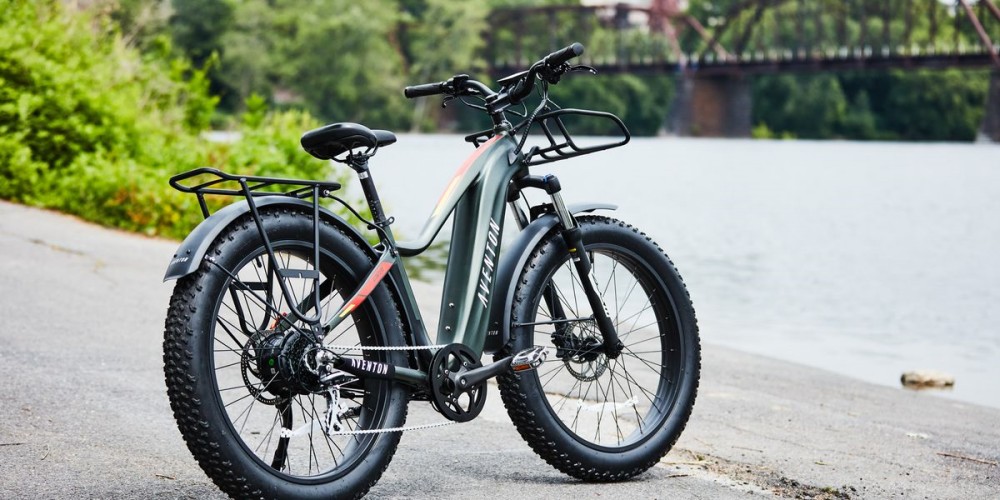How tire width affects e bike performance
While the technology was developed by the Frenchman Jean Naudet while travelling across the Sahara Desert in the 80’s, with the introduction of the well-behaved Pugsley in 2004 and allowed riders to tackle extreme terrain and winter rides with greater ease. Today, with the popularity of e-bikes, fat tire are more common than ever. E-bikes make it possible for almost everyone to enjoy riding a bike without getting nervous or sweaty, while fat tyre ebikes allow people to ride on almost any surface or terrain.
With so many different types of e-bikes available, it’s crucial to choose the right one for your needs. One of the most important factors when choosing an e-bike is the tyre size. It is important to understand that manufacturers design different bike models with different components to meet specific needs and use specific parts that they believe will best achieve the best performance.
That said, the tyre width will determine the geometry of the rest of the bike and its intended use. With this in mind, let’s take a look at the pros and cons of fat tire on e-bikes to determine the right size for you. At the end of this article, we’ll provide some knowledge on how to find the sweet spot for e-bike tyre sizes.
Benefits of fat tire
A “fat tire ” is usually defined as a bicycle tyre that is at least 3.7 inches wide, and can even be more than 5 inches wide. Riders are often attracted to wide tyres because of their rugged and often poor appearance. Aesthetics aside, fat tyres are ideal for those who want to ride on rough terrain such as snow, sand and mud, as they provide more stability and traction on these types of surfaces and prevent the bike from sinking.
Fat tyre bike riders often refer to a feeling of ‘floating’ on the ground, as the relatively low tyre pressure allows the fat tyre to absorb unevenness and bumps and act as a suspension system.
Fat tyres offer better grip because their larger surface area distributes weight more evenly. That said, when it comes to road grip, tyre air pressure (measured in PSI: pounds per square inch) makes a significant difference, arguably more than any other factor. Narrow road bike tyres typically have pressures between 90-120 PSI, hybrid/commuter tyres around 60 PSI, mountain bike tyres between 25-50 PSI and wide bike tyres should typically have pressures between 5-20 PSI.
Although all fat tyres have a lower PSI than skinny tyres, fat tyre riders will still want to experiment with PSI to determine which is most effective for their preference and terrain. While the higher side of the fat tyre’s PSI range will result in more damping and a smoother ride, the lower side of the recommended fat tyre’s PSI range will result in more traction.
Typically, very low PSI (under 5!) is recommended when riding on fresh fluffy/loose snowfall, around 10 PSI is ideal for dirt roads, and between 15-20 PSI stretches better on pavement when you’re on a fat bike.
Finally, due to their lower pressure and higher tyre “deformation”, fat tyres are less likely to cause blowouts and flat tires. Imagine two balloons, one inflated to its maximum and the other just partially inflated. The balloon with less air is more malleable than the one inflated to its maximum and is less likely to flatten when poked.
Bottom line: wide tire look cool (dare we say “phat”?), provide excellent traction, and are a great way to get around. ), provide excellent traction, offer more shock absorption than narrower tyres, are less prone to blowouts and open up a world of exploration through the variety of terrain they can cover.
Disadvantages of fat tyres
While fat tyre bikes travel well on paved roads, it’s like driving an off-road jeep down a nearby cul-de-sac. While wider tyres can make it easier for your e-bike to traverse exotic surfaces like snow, sand or mud, they have their drawbacks. More traction means more friction, which means more rolling resistance and slower travelling speeds on the paved surfaces common to most city dwellers.
Let’s consider weight. Fat tyres are much heavier than regular tyres. In addition, they require heavier rims and a heavier frame, which typically makes the overall weight 10-20 pounds heavier than an e-bike with a regular frame and tyres. The added weight can cause additional problems, including difficulty accelerating, slow braking, and smooth cornering. Since the increased surface area and weight causes more friction, the extra load is transferred directly to the battery, which drains power faster than usual, thus reducing the expected mileage per charge. Another thing to consider is ease of storage and portability. E-bikes with wider tyres weigh more, take up more space and are more difficult to load onto a vehicle or frame.
Fat tyres are harder to steer than “regular” hybrid tyres (range 1.25″-2.5″) or road bike tyres (0.9″-1.25″). While narrow tyre racers are very agile and can even turn with ease, wide tyre bikes require more power to turn and may require more braking if turning at high speeds. Fatter tyres can also cause the bike to accelerate and stop slower due to the increased weight.
Although becoming less important due to the growing popularity of fat tyres, it is difficult to find fat tyres and their compatible inner tubes in some bike shops compared to standard width road or mountain bike tyres. Finally, although it happens less frequently, replacing fat tyres can be particularly challenging, especially if you’re on the road.

The bottom line: fat tyres travel slower on pavement, are more taxing on e-bike batteries, are less agile when handling sharp turns, and are more difficult to ride uphill. They result in heavier bikes and are harder to transport, store and replace inner tubes.
Finding the sweet spot – which tyre is best for you?
Each type of tyre has advantages and disadvantages. You will only be happy with the tyre that best suits your needs, so there are a few things to consider when choosing your e-bike tyre size.
What type of terrain do you ride most often: sand, snow, tarmac or gravel?
How will you transport or store your e-bike?
Do you like to go as fast as possible or do you value variety in terrain more?
Do the size and weight of your e-bike affect you?
At HOTEBIKES, we have tested almost every conceivable tyre size on e-bikes and found that “plus size” tyres strike the perfect balance between fat tyres and traditional commuter tyres. Oversized tyres are typically defined as tyres with a width of 2.8″ – 3.0″, and are ideal for riders who care about comfort on pavement, gravel roads and off-road riding.
While you’ll certainly need really fat tyres to cross the Sahara desert or Siberian tundra, we’ve found that large size tyres are the perfect ‘happy medium’ option for 99% of riding situations. Our Simple Module and HOTEBIKE A5AH26 City + feature 2.35+ inch tyres that are perfect for urban riding, and perfectly suited to almost any terrain a mere mortal is bound to encounter. If size is an issue – the HOTEBIKE A7AH20 + folds down for easy storage and luggage transport.

If you’re looking to traverse more rugged terrain, the HOTEBIKE A6AH26F Black also comes with large 4-inch tyres with knobby tread and dual suspension for a luxuriously smooth ride over dirt, gravel and trails. For those who mostly live in urban environments and want to go faster, the HOTEBIKE A6AH26F Berlin has a tyre width of 38 mm (~1.5 inches).
Each of our bikes is carefully built for optimal performance, and we can’t wait to chat with you to find out which bike best suits your riding needs! Email us today to schedule an online bike fitting with our team of expert consultants and we’ll be happy to help you find the best electric bike for your needs.
BOTTOM LINE: If you’re in an area with epic snowdrifts or rugged terrain to explore and you don’t mind going slow, consider wide tyres. If you want to go faster and have mostly paved streets nearby to ride on, you may prefer narrower tyres. If you value comfort and easy handling over speed, then larger tyres are perfect for you.
 Shuangye ebike
Shuangye ebike

